Themed collection Chiral Inorganic Nanomaterials

Chiral nanomaterials: evolving rapidly from concepts to applications
Professor Nicholas A. Kotov, Professor Luis M. Liz-Marzán and Professor Qiangbin Wang introduce a themed collection in Materials Advances on chiral nanomaterials.

Mater. Adv., 2022,3, 3677-3679
https://doi.org/10.1039/D2MA90034C
The significance of nanoparticle shape in chirality transfer to a surrounding nematic liquid crystal reporter medium
This perspective reports on recent progress toward the development of an approach to a priori predict - both chirality “strength” and efficacy of chirality transfer from a chiral nanoshape solute to an achiral nematic environment.
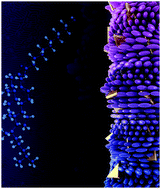
Mater. Adv., 2022,3, 3346-3354
https://doi.org/10.1039/D2MA00093H
Chiral plasmonic nanostructures: recent advances in their synthesis and applications
This review presents the main techniques employed to construct chiral plasmonic materials and metasurfaces, in particular using soft-chemistry approaches, and discusses some applications of these nanostructures.
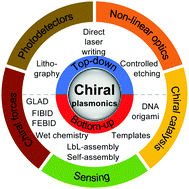
Mater. Adv., 2022,3, 186-215
https://doi.org/10.1039/D1MA00915J
Imprinting chirality in inorganic nanomaterials for optoelectronic and bio-applications: strategies, challenges, and opportunities
We have shed light on the recent advances in imprinting chirality into achiral inorganic nanomaterials using organic chiral molecules, their structural analysis, growth mechanism, optical, optoelectronic, and bio-applications.

Mater. Adv., 2021,2, 7620-7637
https://doi.org/10.1039/D1MA00846C
Progress and perspective on chiral plasmonic nanostructures enabled by DNA programming methodology
DNA nanotechnology enables to precisely construct chiroplasmonic assemblies at the nanometer scale. This review aims to look back so far the chiroplasmonic assemblies from a new perspective of the evolution of DNA programming methodology.
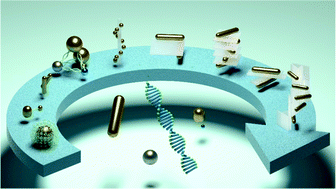
Mater. Adv., 2021,2, 7336-7349
https://doi.org/10.1039/D1MA00781E
Controlling the size and circular dichroism of chiral gold helicoids
A comprehensive investigation of size- and optical-response-controlled chiral nanomaterials from morphological analysis to a fundamental understanding.
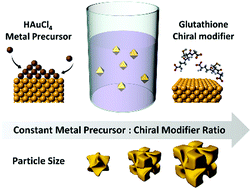
Mater. Adv., 2021,2, 6988-6995
https://doi.org/10.1039/D1MA00783A
Correlations between helicity and optical losses within general electromagnetic scattering theory
Helicity preserving nanostructures and metasurfaces have been proposed as candidates to enhance spectroscopic features of chiral molecules. With this in mind, we show that losses in the constituent materials impede the conservation of helicity in systems such as core–shells or inorganic chiral spheres.

Mater. Adv., 2022,3, 4179-4185
https://doi.org/10.1039/D2MA00052K
Visible wavelength spectral tuning of absorption and circular dichroism of DNA-assembled Au/Ag core–shell nanorod assemblies
Plasmonic nanoparticles with Ag shells have unique properties which can be harnessed to manipulate light at the nanoscale.
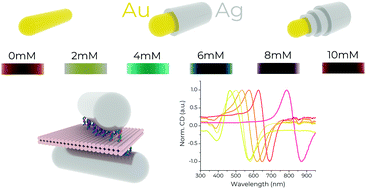
Mater. Adv., 2022,3, 3438-3445
https://doi.org/10.1039/D1MA01211H
Structure sensitive enantioselectivity on surfaces: tartaric acid on all surfaces vicinal to Cu(111)
Maps of reaction rate constants across all surface orientations vicinal to Cu(111) reveal that D-tartaric acid decomposes preferentially on Cu(hkl)S surfaces while L-tartaric acid decomposes preferentially on Cu(hkl)R orientations.

Mater. Adv., 2022,3, 2191-2199
https://doi.org/10.1039/D1MA00876E
Orientation dependence of optical activity in light scattering by nanoparticle clusters
The optical properties of nanoparticle clusters vary with the spatial arrangement of the constituent particles, but also the overall orientation of the cluster with respect to the incident light.
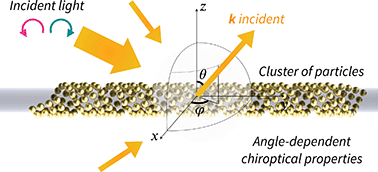
Mater. Adv., 2022,3, 1547-1555
https://doi.org/10.1039/D1MA00869B
Competitive induction of circularly polarized luminescence of CdSe/ZnS quantum dots in a nucleotide–amino acid hydrogel
CdSe/ZnS quantum dots with circularly polarized luminescence in a nucleotide–amino acid hydrogel.

Mater. Adv., 2022,3, 682-688
https://doi.org/10.1039/D1MA00843A
Superchiral hot-spots in “real” chiral plasmonic structures
Light scattering from chiral plasmonic structures can create near fields with an asymmetry greater than the equivalent circularly polarised light, a property sometimes referred to as superchirality.
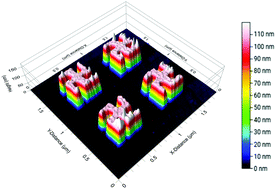
Mater. Adv., 2022,3, 346-354
https://doi.org/10.1039/D1MA00831E
About this collection
Guest Edited by Luis M. Liz-Marzán (CIC biomaGUNE, Spain), Nicholas A. Kotov (University of Michigan, USA), and Qiangbin Wang (SINANO, China).
Chirality has traditionally been a property related to organic molecules, in connection with either C-centres bound to 4 different substituents or supramolecular organization (e.g. in some liquid crystal phases). During the past decade, a vast amount of research has been carried out to demonstrate chirality in inorganic materials, eminently occurring at the nanoscale. In combination with the size-dependent properties of nanomaterials, chirality opens plenty of possibilities for novel phenomena and potential technological applications.
In this Themed Collection, we present articles from across the wide diversity of materials for which chirality-related phenomena have been uncovered.